#parkersolarprobe
Link
0 notes
Text
Un evento catastrófico podría revelar el origen de las Gemínidas
Con información proporcionada por la sonda #ParkerSolarProbe de @NASASun pueden revelar cómo surgieron las Gemínidas.
Agencias, Ciudad de México.- La misión Parker Solar Probe de la NASA está proporcionando nueva evidencia de que un evento violento y catastrófico creó las Gemínidas, una de las lluvias de meteoros más intensas.
La mayoría de estos fenómenos periódicos en el cielo nocturno provienen de cometas, que están hechos de hielo y polvo. Cuando un cometa viaja cerca del Sol, el hielo se evapora y libera…
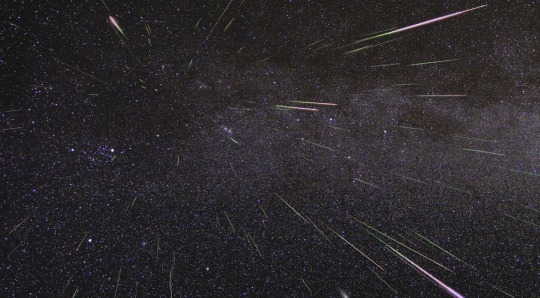
View On WordPress
0 notes
Photo
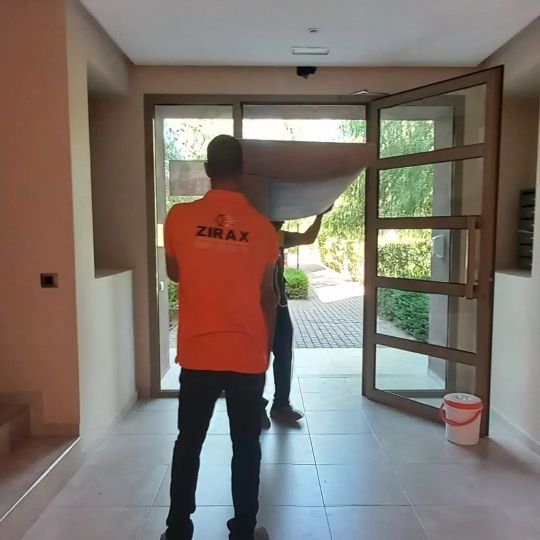
. . . . . . . . . . #parkeruniversity #parkermayfierce #parkerphotographer #parkergrace #vwtransporter #transports #transporteurbano #parkercounty #transporters #transportedecargas #transporteexecutivo #parkerhouse #transportistas #zirax #tagify_app #transportation #transporterhq #parkergames #parkerjames #parkerpk #déménagement #transportdesign #transporter #marrakech #transportert5 #transportlombok #transportation #parkerkennedyliving #parkersolarprobe #parkermckennaaa (at Marrakech) https://www.instagram.com/p/ClEQPG3tbkF/?igshid=NGJjMDIxMWI=
#parkeruniversity#parkermayfierce#parkerphotographer#parkergrace#vwtransporter#transports#transporteurbano#parkercounty#transporters#transportedecargas#transporteexecutivo#parkerhouse#transportistas#zirax#tagify_app#transportation#transporterhq#parkergames#parkerjames#parkerpk#déménagement#transportdesign#transporter#marrakech#transportert5#transportlombok#parkerkennedyliving#parkersolarprobe#parkermckennaaa
0 notes
Text
Carolyn Collins Petersen - Parker Solar Probe Flies Close Enough to the Sun to See the Source of the Fast Solar Wind:
https://www.universetoday.com/161891/parker-solar-probe-flies-close-enough-to-the-sun-to-see-the-source-of-the-fast-solar-wind/
#ParkerSolarProbe #PSP #Parker #Sun #FastSolarWind #SolarWind #CoronalHoles #Convection #Supergranulation #SpaceWeather #SolarPhysics #Astrophysics #Astronomy
0 notes
Video
youtube
Our closest-ever look inside the sun's corona has unveiled an unexpectedly chaotic world of rogue plasma waves, flipping magnetic fields and distant solar winds under the thrall of the sun’s rotation: https://news.engin.umich.edu/2019/12/...
These findings come from University of Michigan researchers serving key roles in NASA's Parker Solar Probe Mission, and are part of the first wave of results from the probe that launched in August 2018, provide important insights into two fundamental questions the mission was designed to answer: Why does the sun's corona get hotter as your move further away from the surface? And what accelerates the solar wind—an outward stream of protons, electrons and other particles emanating from the corona. Both questions have ramifications for how we predict, detect and prepare for solar storms and coronal mass ejections that can have dramatic impacts on Earth's power grid and on astronauts. Justin Kasper, a professor of climate and space sciences and engineering at U-M who serves as principal investigator for Parker’s Solar Wind Electrons Alphas and Protons (SWEAP) instrument suite. https://clasp.engin.umich.edu/people/...
Watch more videos from Michigan Engineering and subscribe: https://www.youtube.com/michiganengin...
Video by Levi Hutmacher/Michigan Engineering, Communications and Marketing
21 notes
·
View notes
Text
10 Things to Know About Parker Solar Probe
On Aug. 12, 2018, we launched Parker Solar Probe to the Sun, where it will fly closer than any spacecraft before and uncover new secrets about our star. Here's what you need to know.
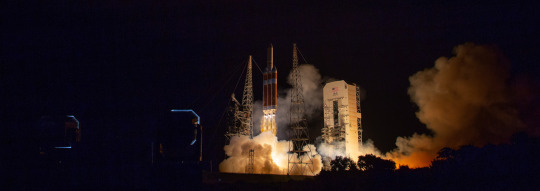
1. Getting to the Sun takes a lot of power
At about 1,400 pounds, Parker Solar Probe is relatively light for a spacecraft, but it launched to space aboard one of the most powerful rockets in the world, the United Launch Alliance Delta IV Heavy. That's because it takes a lot of energy to go to the Sun — in fact, 55 times more energy than it takes to go to Mars.
Any object launched from Earth starts out traveling at about the same speed and in the same direction as Earth — 67,000 mph sideways. To get close to the Sun, Parker Solar Probe has to shed much of that sideways speed, and a strong launch is good start.
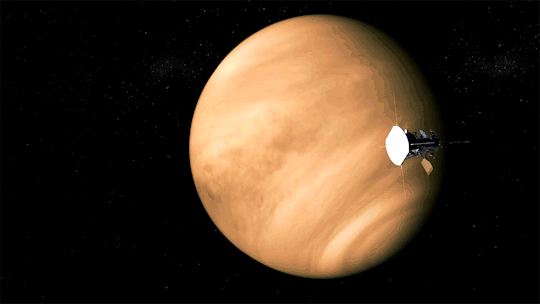
2. First stop: Venus!
Parker Solar Probe is headed for the Sun, but it's flying by Venus along the way. This isn't to see the sights — Parker will perform a gravity assist at Venus to help draw its orbit closer to the Sun. Unlike most gravity assists, Parker will actually slow down, giving some orbital energy to Venus, so that it can swing closer to the Sun.
One's not enough, though. Parker Solar Probe will perform similar maneuvers six more times throughout its seven-year mission!

3. Closer to the Sun than ever before
At its closest approach toward the end of its seven-year prime mission, Parker Solar Probe will swoop within 3.83 million miles of the solar surface. That may sound pretty far, but think of it this way: If you put Earth and the Sun on opposite ends of an American football field, Parker Solar Probe would get within four yards of the Sun's end zone. The current record-holder was a spacecraft called Helios 2, which came within 27 million miles, or about the 30 yard line. Mercury orbits at about 36 million miles from the Sun.
This will place Parker well within the Sun's corona, a dynamic part of its atmosphere that scientists think holds the keys to understanding much of the Sun's activity.
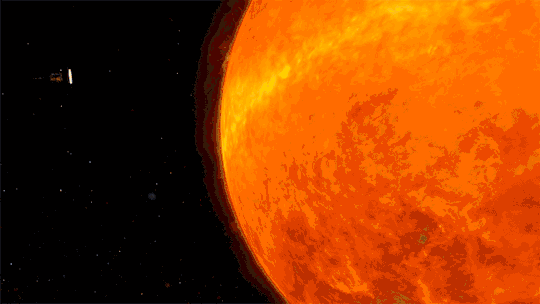
4. Faster than any human-made object
Parker Solar Probe will also break the record for the fastest spacecraft in history. On its final orbits, closest to the Sun, the spacecraft will reach speeds up to 430,000 mph. That's fast enough to travel from New York to Tokyo in less than a minute!

5. Dr. Eugene Parker, mission namesake
Parker Solar Probe is named for Dr. Eugene Parker, the first person to predict the existence of the solar wind. In 1958, Parker developed a theory showing how the Sun’s hot corona — by then known to be millions of degrees Fahrenheit — is so hot that it overcomes the Sun’s gravity. According to the theory, the material in the corona expands continuously outwards in all directions, forming a solar wind.
This is the first NASA mission to be named for a living person, and Dr. Parker watched the launch with the mission team from Kennedy Space Center in Florida.
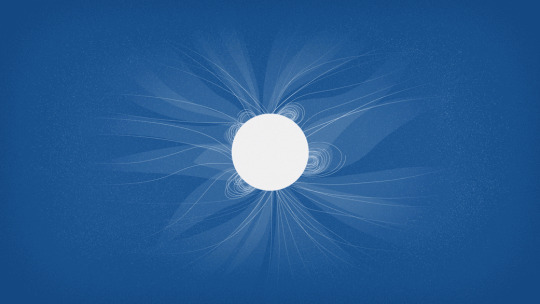
6. Unlocking the secrets of the solar wind
Even though Dr. Parker predicted the existence of the solar wind 60 years ago, there's a lot about it we still don't understand. We know now that the solar wind comes in two distinct streams, fast and slow. We've identified the source of the fast solar wind, but the slow solar wind is a bigger mystery.
Right now, our only measurements of the solar wind happen near Earth, after it has had tens of millions of miles to blur together, cool down and intermix. Parker's measurements of the solar wind, just a few million miles from the Sun's surface, will reveal new details that should help shed light on the processes that send it speeding out into space.
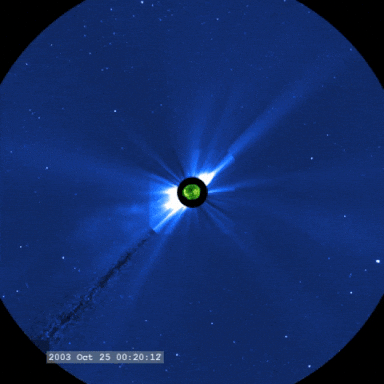
7. Studying near-light speed particles
Another question we hope to answer with Parker Solar Probe is how some particles can accelerate away from the Sun at mind-boggling speeds — more than half the speed of light, or upwards of 90,000 miles per second. These particles move so fast that they can reach Earth in under half an hour, so they can interfere with electronics on board satellites with very little warning.

8. The mystery of the corona's high heat
The third big question we hope to answer with this mission is something scientists call the coronal heating problem. Temperatures in the Sun's corona, where Parker Solar Probe will fly, spike upwards of 2 million degrees Fahrenheit, while the Sun's surface below simmers at a balmy 10,000 F. How the corona gets so much hotter than the surface remains one of the greatest unanswered questions in astrophysics.
Though scientists have been working on this problem for decades with measurements taken from afar, we hope measurements from within the corona itself will help us solve the coronal heating problem once and for all.

9. Why won't Parker Solar Probe melt?
The corona reaches millions of degrees Fahrenheit, so how can we send a spacecraft there without it melting?
The key lies in the distinction between heat and temperature. Temperature measures how fast particles are moving, while heat is the total amount of energy that they transfer. The corona is incredibly thin, and there are very few particles there to transfer energy — so while the particles are moving fast (high temperature), they don’t actually transfer much energy to the spacecraft (low heat).
It’s like the difference between putting your hand in a hot oven versus putting it in a pot of boiling water (don’t try this at home!). In the air of the oven, your hand doesn’t get nearly as hot as it would in the much denser water of the boiling pot.
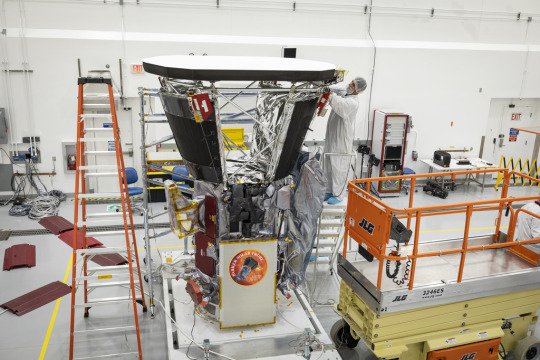
10. Engineered to thrive in an extreme environment
Make no mistake, the environment in the Sun's atmosphere is extreme — hot, awash in radiation, and very far from home — but Parker Solar Probe is engineered to survive.
The spacecraft is outfitted with a cutting-edge heat shield made of a carbon composite foam sandwiched between two carbon plates. The heat shield is so good at its job that, even though the front side will receive the full brunt of the Sun's intense light, reaching 2,500 F, the instruments behind it, in its shadow, will remain at a cozy 85 F.
Even though Parker Solar Probe's solar panels — which provide the spacecraft's power — are retractable, even the small bit of surface area that peeks out near the Sun is enough to make them prone to overheating. So, to keep its cool, Parker Solar Probe circulates a single gallon of water through the solar arrays. The water absorbs heat as it passes behind the arrays, then radiates that heat out into space as it flows into the spacecraft’s radiator.
For much of its journey, Parker Solar Probe will be too far from home and too close to the Sun for us to command it in real time — but don't worry, Parker Solar Probe can think on its feet. Along the edges of the heat shield’s shadow are seven sensors. If any of these sensors detect sunlight, they alert the central computer and the spacecraft can correct its position to keep the sensors — and the rest of the instruments — safely protected behind the heat shield.
Read the web version of this week’s “Solar System: 10 Things to Know” article HERE.
Make sure to follow us on Tumblr for your regular dose of space: http://nasa.tumblr.com.
2K notes
·
View notes
Photo

Parker Solar Probe Prelaunch (NHQ201808100007) by NASA HQ PHOTO https://flic.kr/p/MS4GkG
37 notes
·
View notes
Photo

Hard to believe another year is coming to a close. I remain extremely honored to have been given the opportunity to document our nation’s space program. These are my nine most liked images by you in 2018. Thank you for all of your support! All Photos Credit: (NASA/Bill Ingalls) . Images, as reading left to right: 1) GRACE Follow-On, SpaceX Falcon 9 launch, VAFB, California. 2) ULA Delta IV Heavy launch of NASA's Parker Solar Probe, Cape Canaveral, Florida. 3) Mars InSight lander successfully touches down on the surface of Mars, JPL, Pasadena, California. 4) ULA Delta IV Heavy launch of NASA's Parker Solar Probe, Cape Canaveral, Florida. 5) Expedition 57 Soyuz launch, Baikonur Cosmodrome in Kazakhstan. 6) Mars InSight lander successfully touches down on the surface of Mars, JPL, Pasadena, California. 7) Lunar transit of the International Space Station as seen from Alexandria, Virginia. 8) Soyuz rocket rollout and prep for the Expedition 57 launch, Baikonur Cosmodrome in Kazakhstan. 9) Space shuttle Discovery, April 19, 2012, Apron W of the Dulles International Airport, Herndon, Virginia. . All Photos Credit: (NASA/Bill Ingalls) . . . . #gracefo #grace @nasajpl #30thspacewing #vandenberg #vandenbergairforcebase #germanresearchcentreforgeosciences #spacelaunchcomplex4e @spacex #falcon9 #Earth #launch #iridium #atmosphere #oceans #land #ice @nasa #billingalls #SolarProbe #ParkerSolarProbe #capecanaveralairforcestation #ccafs #ula #unitedlaunchalliance #deltaIV #deltaIVheavy #rocket #launchpad #space #sun #Қазақстан @gctc_official @roscosmosofficial #karaganda #kazakhstan #insight #california #jpl #marslanding #nickhague #alexseyovchinin #baikonur #baikonurcosmodrome #soyuz #expedition57 #baykonur #Космодром #Байқоңыр #зымыран #Союз #anomaly #spaceshuttle #discovery #dullesairport #iad #airandspacemuseum #udvarhazy #virginia #spaceshuttlediscovery #herndon @dulles_airport @airandspacemuseum @ulalaunch https://www.instagram.com/p/Br7i8QPFQZh/?utm_source=ig_tumblr_share&igshid=1tlviyg5lerw
#gracefo#grace#30thspacewing#vandenberg#vandenbergairforcebase#germanresearchcentreforgeosciences#spacelaunchcomplex4e#falcon9#earth#launch#iridium#atmosphere#oceans#land#ice#billingalls#solarprobe#parkersolarprobe#capecanaveralairforcestation#ccafs#ula#unitedlaunchalliance#deltaiv#deltaivheavy#rocket#launchpad#space#sun#қазақстан#karaganda
1 note
·
View note
Photo
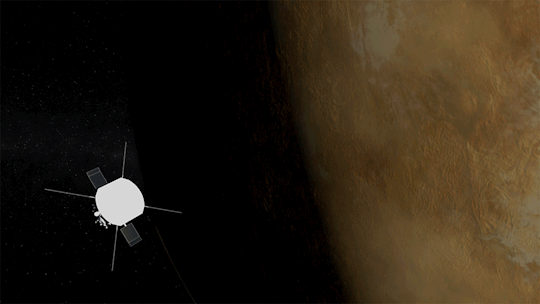
NASA’s #ParkerSolarProbe performed first gravity assist maneuver with Venus #SunDay
Full Story: https://www.nasa.gov/feature/goddard/2018/parker-solar-probe-changed-the-game-before-it-even-launched
3 notes
·
View notes
Photo

ATTENTION Slow Your Scroll: Special #ThrowbackThursday post with some #STELLAR news! #TBT August 2015 I received a VIP tour of @ulalaunch ’s facility in #Decatur, #Alabama, and met many of their rock(et)star employees! And now - 3 years later - on THIS Saturday (August 11) I will be a VIP guest of #ULA at their launch facilities located at the #CapeCanaveral #AirForce Station in #Florida to get an up close view of the launch of #spaceship NASA’s #parkersolarprobe on the ULA #DeltaIV Heavy #rocket! I'll be hanging out with ULA CEO #ToryBruno during the launch and can't wait to introduce you all to him! Tory has been a supporter of @themarsgeneration for years and is on our advisory board. Did I say I? I meant WE! That's right, I'm inviting you to come along! I'll be sharing the whole experience using live streaming, live tweeting, and more so that you can experience this special behind the scenes peek into space from anywhere in the world! And stay tuned. More fun adventures (in the air) are coming in the next 3 weeks! #deltaheavy #astronaut #hotticket #rocketlaunch #spaceship #themarsgeneration #internabby (at Cape Canaveral Air Force Station)
#throwbackthursday#stellar#tbt#decatur#alabama#ula#capecanaveral#airforce#florida#spaceship#parkersolarprobe#deltaiv#rocket#torybruno#deltaheavy#astronaut#hotticket#rocketlaunch#themarsgeneration#internabby
9 notes
·
View notes
Link
“We have reached the end,” said Nicola Fox, director of NASA’s Heliophysics Science Division in Washington, D.C., at a press conference on December 14 at the American Geophysical Union. “Mankind has touched the sun.”
Parker left the centre of the planets and landed in the sun-drenched area on April 28, 2021, during his encounter with the sun. While we were there, an investigation took the initial estimates of where the border, called the Alfvén critical surface, lies. Nearly 13 million miles [13 million km] above the sun, physicists reported on the conference, which was held online and in New Orleans, and in the Physical Review review material on December 14th.
0 notes
Text

📌La Atención Primaria se colapsa en Madrid: largas colas en los centros de salud para conseguir una PCR
📌Un glaciar enorme podría colapsar y elevar medio metro el océano
📌Un autobús interurbano ardió ayer por la tarde en Pozuelo dirección Carabanchel | Vídeos
📌La nueva ley de FP y sus claves
📌Menos del 15% de la juventud española puede emanciparse
📌Isabel Díaz Ayuso nos enseña la España que sufrimos
📌Una sonda de la NASA ‘toca’ el Sol
📌Empezar a cambiar el mundo cerrando locales de apuestas y escribiendo libros que nos ayudan a actuar
https://carabanchel.net
#Carabanchel#Madrid#CambioClimatico#Glaciar#Colapso#NivelMar#Antártida#ICEBERG#ecología#IncendioBus#ParkerSolarProbe#Pozuelo#sucesos#GobiernoAyusoDimisión#PCR#Tests#Autodiagnósticos#AtenciónPrimaria#GobiernoAyusoMiente#CentrosSalud#AyusoDimision#apuestas#ludopatía#certificaciones#emancipación#Juventud#precariedad#conflictosocial#ObservatorioDeEmancipaciónDelConsejoDeLaJuventud#LeyFP
0 notes
Photo

Camion de déménagement Téléphone : +212 661350076 . . . . . . . . . #parkeruniversity #parkermayfierce #parkerphotographer #parkergrace #vwtransporter #transports #transporteurbano #parkercounty #transporters #transportedecargas #transporteexecutivo #parkerhouse #transportistas #zirax #tagify_app #transportation #transporterhq #parkergames #parkerjames #parkerpk #transportert6 #transportdesign #transporter #parkerpens #transportert5 #transportlombok #transportmurah #parkerkennedyliving #parkersolarprobe #parkermckennaaa (at Morocco) https://www.instagram.com/p/ClEPeJYNq5l/?igshid=NGJjMDIxMWI=
#parkeruniversity#parkermayfierce#parkerphotographer#parkergrace#vwtransporter#transports#transporteurbano#parkercounty#transporters#transportedecargas#transporteexecutivo#parkerhouse#transportistas#zirax#tagify_app#transportation#transporterhq#parkergames#parkerjames#parkerpk#transportert6#transportdesign#transporter#parkerpens#transportert5#transportlombok#transportmurah#parkerkennedyliving#parkersolarprobe#parkermckennaaa
0 notes
Photo

For the first time in history, a NASA spacecraft "touched" the sun. December 15, 2021, 2:59 p.m. Scientists announced yesterday that NASA's Parker solar probe was the first spacecraft to "touch" the sun when it reached the sun's upper atmosphere known as the corona last April, Leah Crane reports for New Scientist.
-
follow us for more updates @The Click Times
0 notes
Text
Our Sun is More than Meets the Eye
The Sun may look unchanging to us here on Earth, but that’s not the whole story.
In visible light – the light our eyes can see – the Sun looks like an almost featureless orange disk, peppered with the occasional sunspot. (Important note: Never look at the Sun directly, and always use a proper filter for solar viewing – or tune in to our near-real time satellite feeds!)

But in other kinds of light, it’s a different picture. The Sun emits light across the electromagnetic spectrum, including the relatively narrow range of light we can see, as well as wavelengths that are invisible to our eyes. Different wavelengths convey information about different components of the Sun’s surface and atmosphere, so watching the Sun in multiple types of light helps us paint a fuller picture.

Watching the Sun in these wavelengths reveals how active it truly is. This image, captured in a wavelength of extreme ultraviolet light at 131 Angstroms, shows a solar flare. Solar flares are intense bursts of light radiation caused by magnetic events on the Sun, and often associated with sunspots. The light radiation from solar flares can disturb part of Earth’s atmosphere where radio signals travel, causing short-lived problems with communications systems and GPS.

Looking at the Sun in extreme ultraviolet light also reveals structures like coronal loops (magnetic loops traced out by charged particles spinning along magnetic field lines)…

…solar prominence eruptions…

…and coronal holes (magnetically open areas on the Sun from which solar wind rushes out into space).

Though extreme ultraviolet light shows the Sun's true colors, specialized instruments let us see some of the Sun's most significant activity in visible light.
A coronagraph is a camera that uses a solid disk to block out the Sun’s bright face, revealing the much fainter corona, a dynamic part of the Sun’s atmosphere. Coronagraphs also reveal coronal mass ejections, or CMEs, which are explosions of billions of tons of solar material into space. Because this material is magnetized, it can interact with Earth’s magnetic field and trigger space weather effects like the aurora, satellite problems, and even – in extreme cases – power outages.
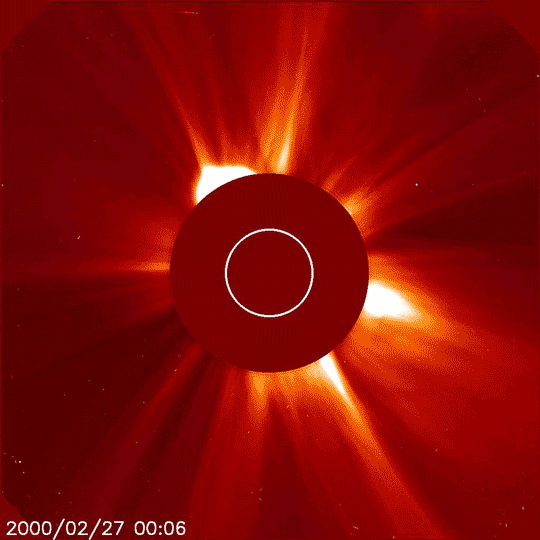
The Sun is also prone to bursts of energetic particles. These particles are blocked by Earth’s magnetic field and atmosphere, but they could pose a threat to astronauts traveling in deep space, and they can interfere with our satellites. This clip shows an eruption of energetic particles impacting a Sun-observing satellite, creating the 'snow' in the image.
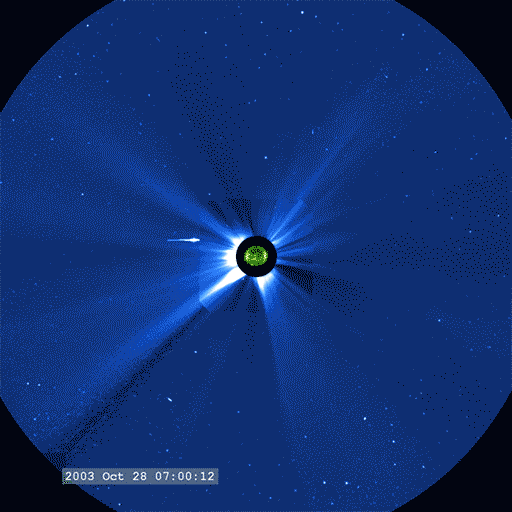
We keep watch on the Sun 24/7 with a fleet of satellites to monitor and better understand this activity. And this summer, we’re going one step closer with the launch of Parker Solar Probe, a mission to touch the Sun. Parker Solar Probe will get far closer to the Sun than any other spacecraft has ever gone – into the corona, within 4 million miles of the surface – and will send back unprecedented direct measurements from the regions thought to drive much of the Sun’s activity. More information about the fundamental processes there can help round out and improve models to predict the space weather that the Sun sends our way.
Keep up with the latest on the Sun at @NASASun on Twitter, and follow along with Parker Solar Probe’s last steps to launch at nasa.gov/solarprobe.
Make sure to follow us on Tumblr for your regular dose of space: http://nasa.tumblr.com.
#NASA#space#parker#solar probe#sun#solar#probe#parkersolarprobe#science#solar system#observing#satellites#space weather
4K notes
·
View notes
Photo

Parker Solar Probe Prelaunch (NHQ201808110003) by NASA HQ PHOTO https://flic.kr/p/27gc1VJ
27 notes
·
View notes